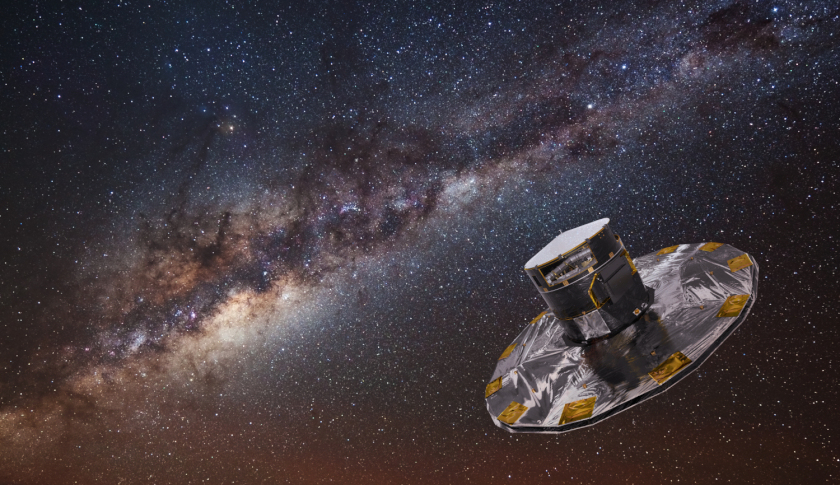We've never met some of the sun's closest neighbours until now. In a new study, astronomers report the discovery of 95 objects known as brown dwarfs, many within a few dozen light-years of the sun.
They're well outside the solar system, so don't experience heat from the sun, but still inhabit a region astronomers consider our cosmic neighbourhood.
This collection represents some of the coldest known examples of these objects, which are between the sizes of planets and stars.
Members of the public helped make these discoveries through Backyard Worlds: Planet 9, a NASA-funded citizen science project that is a collaboration between volunteers and professional scientists.
Aaron Meisner, assistant scientist at National Science Foundation's NOIRLab and the lead author of the study describing the brown dwarfs, said, “Vast modern datasets can unlock landmark discoveries, and it's exciting that these could be spotted first by citizen scientists.”
Backyard Worlds incorporates data from NASA's Near-Earth Object Wide-Field Infrared Survey Explorer (NEOWISE) satellite along with all-sky observations collected between 2010 and 2011 under its previous moniker, WISE.
Data from NASA's retired Spitzer Space Telescope and the facilities of the NSF's NOIRLab were also instrumental in the analysis.
“These Backyard Worlds discoveries show that members of the public can play an important role in reshaping our scientific understanding of our solar neighbourhood,” Meisner added.
Brown dwarfs are not massive enough to power themselves like stars but are still many times heavier than planets.
Despite their name, brown dwarfs would actually appear magenta or orange-red to the human eye if seen close up.
While brown dwarfs can be extremely hot, even thousands of degrees, many of the newly discovered ones are colder than the boiling point of water. Some even approach the temperature of Earth and are cool enough to harbour water clouds.
Brown dwarfs with low temperatures are also small in diameter and therefore faint in visible light. Still, they give off heat in the form of infrared light, which is invisible to the human eye yet detectable by telescopes such as NEOWISE and Spitzer.
For cold brown dwarfs like those in this study, the infrared signal is also faint, so they are easier to find the closer they are to our solar system.
In 2014, scientists discovered the coldest-known brown dwarf, called WISE 0855, using data from NASA's WISE mission in infrared light. WISE 0855 is about minus 23 degrees.
No other brown dwarf came close to this object's low temperature. Some researchers wondered if 0855 was actually a rogue exoplanet – a planet that originated in a star system but was kicked out of its orbit.
This new batch of brown dwarfs, together with others recently discovered using NEOWISE and Spitzer, puts 0855 in context.
To help find our sun's coldest, nearest neighbors, the professional astronomers of the Backyard Worlds project turned to a worldwide network of more than 100,000 citizen scientists.
These volunteers diligently inspect trillions of pixels of telescope images to identify the subtle movements of brown dwarfs.
Despite the abilities of machine learning and supercomputers, there's no substitute for the human eye when it comes to scouring telescope images for moving objects.
For this new group of brown dwarfs, 20 citizen scientists across 10 different countries are listed as co-authors of the study.
Backyard Worlds volunteers have already discovered more than 1,500 cold worlds near the sun. The new discovery of 95 brown dwarfs is the largest published sample of these objects ever discovered through a citizen science project.
Alongside the dedicated efforts of the Backyard Worlds volunteers, NOIRLab's Astro Data Lab science platform was instrumental in this research.
The approach of the Backyard Worlds project – searching for rare objects in large datasets – is also one of the goals for the Vera C. Rubin Observatory, an NSF/Department of Energy facility currently under construction on Cerro Pachón in Chile's Atacama Desert.
The Rubin Observatory will image the entire southern sky every three nights over 10 years, providing a vast amount of data that will enable new ways of doing astrophysical research.
The new Backyard Worlds discoveries also underscore Spitzer's pioneering legacy of revealing the sun's coolest neighbours.
NASA's forthcoming James Webb Space Telescope will also be a powerful tool for examining brown dwarfs for more insights into these mysterious objects and what they can reveal about the formation of planets and their atmospheres.

